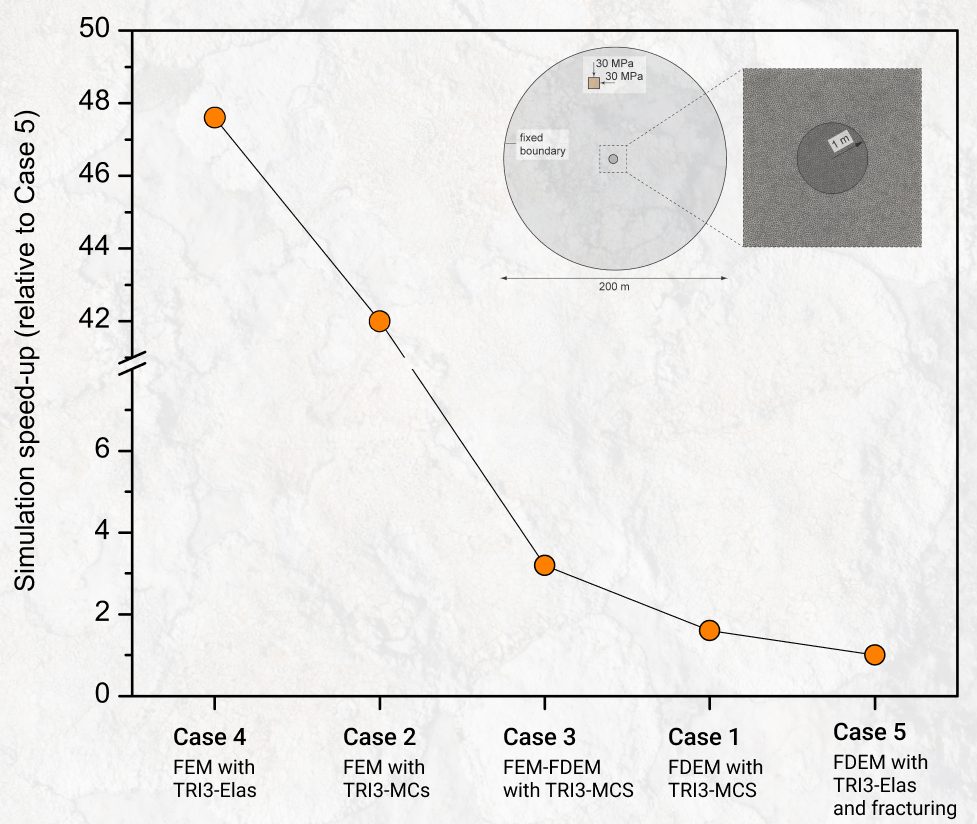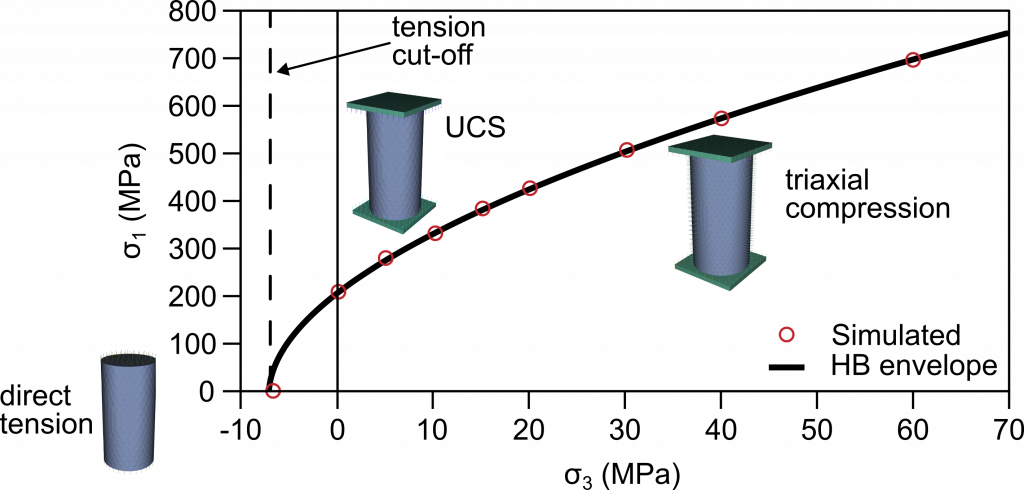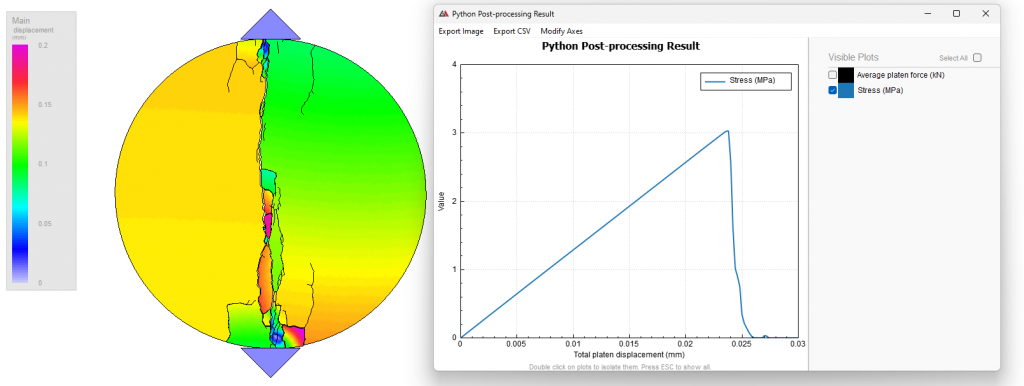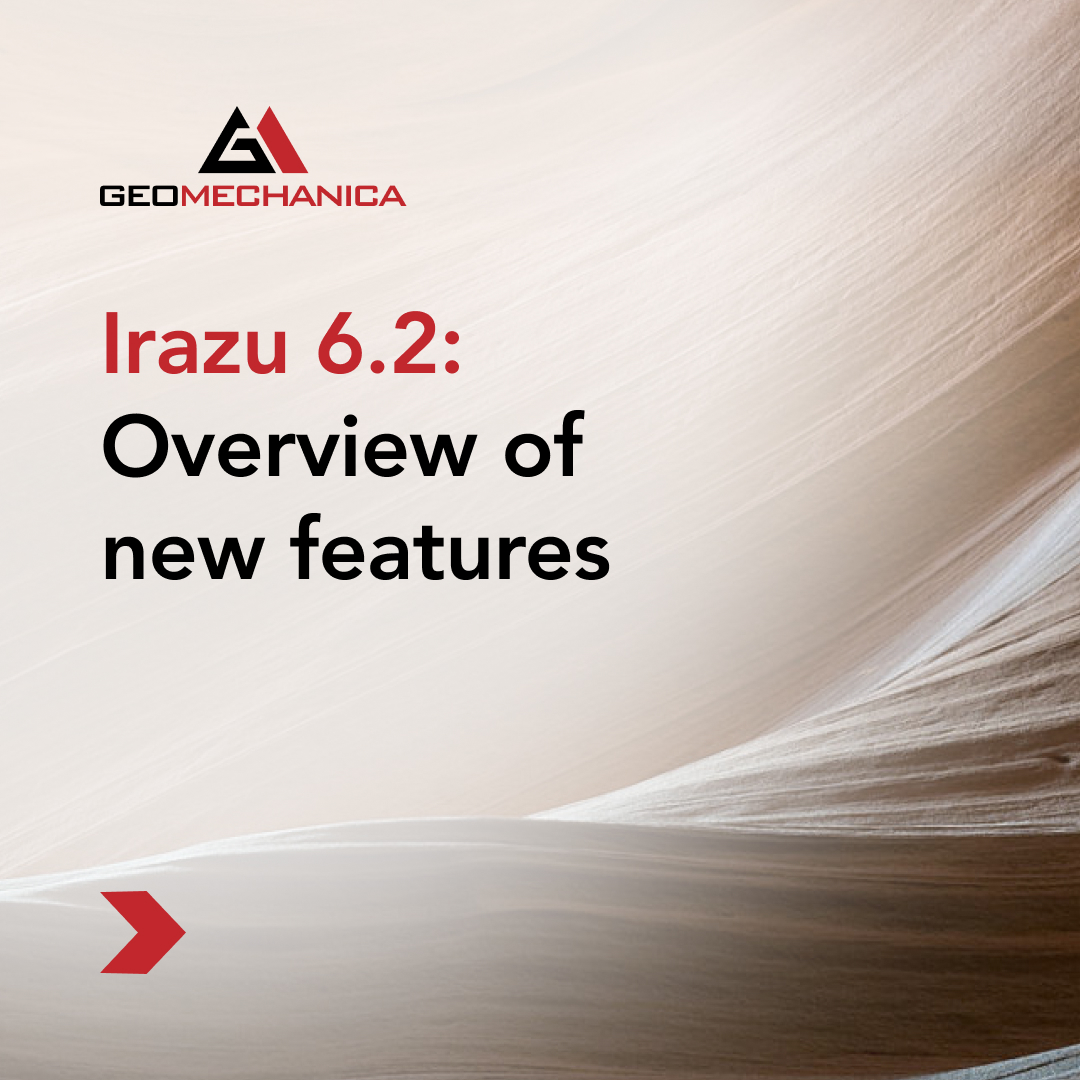With the official release of Irazu 6.2, we are excited to share some of the new features we have been working on over the past year! These new features improve the overall modelling workflow, simplify post-processing of results, and unlock new advanced modelling capabilities. We can’t wait for our users to experience Irazu 6.2 first-hand!
New constitutive models
In addition to the existing linear elastic (FEM) and cohesive fracture model (FDEM) in Irazu, we have added the Mohr-Coulomb and Drucker-Prager elasto-plastic constitutive models. The Hoek-Brown model will also be available shortly. With the new elasto-plastic material model:
- permanent deformation of solid elements is considered;
- materials such as soil, concrete, and soft rocks can be simulated; and
- intra-element damage is captured.

Depending on the choice of material model, users may elect to forego unnecessary simulation physics to improve model runtimes! In this example, a cylindrical hole in an isotropic, homogeneous material subjected to a hydrostatic in-situ stress field is simulated. Five simulation cases are considered:
- Case 1: FEM model assuming a perfectly-plastic Mohr-Coulomb material (i.e., elasto-plastic);
- Case 2: FDEM model with artificially large strength properties to ensure a linear-elastic response;
- Case 3: hybrid FEM-FDEM model with FDEM material around the refined zone around the tunnel, and FEM material in the graded zone;
- Case 4: FEM model assuming plane strain conditions (i.e., elastic); and
- Case 5: FDEM model with strength properties where the extent of fracturing matches the plastic zone of Case 1.
Simulation times are shown relative to the slowest case (Case 5) which is the FDEM model with fracturing. The fastest simulation is a FEM model with fully elastic finite elements (Case 4), achieving an effective speed-up of up to 48 times!

Code your own constitutive models
This is a powerful new feature that allows users to code their own constitutive models within the Irazu framework! This feature has been heavily requested by advanced users of Irazu to allow integration of their constitutive models to capture the behaviour of the material they are modelling. A programmer’s manual is included with Irazu to walk you through the process of creating and using customized constitutive models.
Irazu leverages the powerful compute capabilities of NVIDIA GPUs, and as such, requires the user to code their constitutive model using the CUDA programming language (with C++ language extension). The customized code is compiled into a DLL file using Microsoft Visual Studio and then loaded on demand in Irazu. The compiled DLL file can be easily shared between users to employ constitutive models coded by other Irazu users.

As an example, the Hoek-Brown model was coded and verified in Irazu. The Hoek-Brown criterion is converted into equivalent Mohr-Coulomb parameters with a tension cut-off. Subsequently, the model was verified by simulating direct tension, UCS, and triaxial compression tests on a cylindrical specimen and compared against the Hoek-Brown failure envelope.
Python post-processing
With this new feature, many routine post-processing and analysis operations can be automated. For example, the simulated stresses and strains from laboratory simulations, such as uniaxial or triaxial compressive strength, Brazilian disc, and direct shear models, can be easily extracted. The processed data can be directly plotted on a graph in Irazu and/or exported to CSV format for further processing in other tools. This new development is a highly requested feature to Irazu as it is often necessary to extract simulated stress-strain plots for laboratory simulations to compare against actual laboratory test data – a key part of the workflow when calibrating material properties. However, this scripting capability is not only limited to laboratory simulations as users can apply their own custom Python scripts for post-processing simulation outputs.

Performance improvements on Microsoft Windows
The Irazu engine has been re-worked using a non-unified GPU memory approach to substantially improve computational performance, up to 3.8 times faster, on Microsoft Windows. With this improvement, Irazu performance is almost on par with Linux!
Output visualization improvements
You are now able to split the visualization window to simultaneously view multiple results within a project file.

These are just some of the major changes in Irazu 6.2. We’re actively developing new features to address the needs of the industry and our user base. Feel free to contact us if you have any questions or requests.
